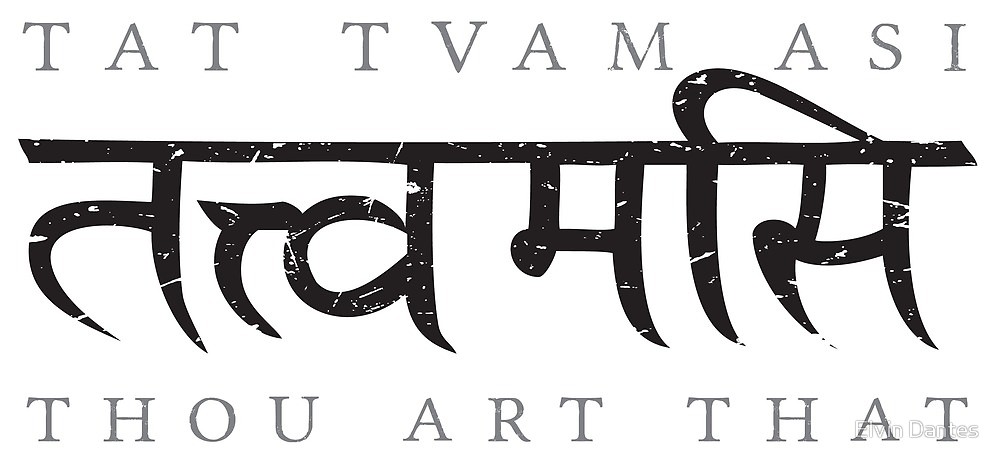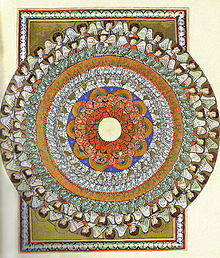한국철학의 특징을 찾아서
글: 조성환
이 글은 개벽신문에 게재되었습니다
----
폐강 직전의 한국철학
이 글은 이번 학기에 서울에 있는 모대학에서 <한국철학특강>을 강의하게 된 것이 계기가 되어 탄생하게 되었다. 나의 모교이기도 한 이 대학은 1년에 30여 개에 달하는 철학과목이 개설되지만 ‘한국철학’ 과목은 단 한 개에 불과하다. 그런데 그것조차도 이번 학기에는 학생 10명을 채우지 못해 폐강 위기에 처한 것이다. 서양철학과목은 적게는 50명, 많게는 100명까지도 학생들이 몰려오고, 중국철학도 기본적으로 수십 명은 채워지는데 왜 유독 한국철학만은 이렇게 외면당하는 것일까? 한국철학을 연구하는 한 사람으로서 이 참담한 현실을 눈앞에 두고 무언가 하지 않을 수 없었다. 그래서 이 글을 연재하게 된 것이다.
---
물론 <한국철학특강>이 폐강직전까지 간 데에는 여러 가지 이유가 있을 것이다. 가령 전문적인 ‘특강’ 과목이라는 점, ‘동학’이라는 생소한 주제를 다루고 있다는 점, 시간대가 금요일 늦은 오후라는 점, 가톨릭 계열의 학교라서 상대적으로 한국철학에 소홀하다는 점, 강사인 나의 역량이 부족하다는 점 등등. 그러나 이런 점들을 다 감안해도 한국철학에 대한 철학과 학생들의 무관심은 정도가 지나치다는 생각이 들었다. 그리고 이런 무관심은 무엇보다도 철학과 교수들의 한국철학 인식과 무관하지 않다는 결론에 도달하였다. 왜냐하면 철학과 학생들은 기본적으로 철학과 교수들의 절대적인 영향 하에 있기 때문이다.
사실 ‘한국학 어떻게 할 것인가?’라는 주제는 이번에 처음 생각하게 된 것은 아니다. 지금으로부터 10여 년 전쯤, 일본에 유학하고 있을 때부터 이 물음은 시작되었다. 그때 나는 한국에서 생각했던 것과는 전혀 다른 ‘일본’의 모습을 접하고서 오히려 ‘한국이란 무엇인가?’라는 문제의식을 갖게 되었다. 그리고 우연히 교토포럼을 기획하고 진행하시는 한국인 철학자 김태창 선생을 만난 뒤로 처음으로 ‘한국철학’에 대해 관심을 갖게 되었다. 그러다가 한국에 돌아와서 한국철학으로 박사학위논문을 준비하면서 본격적으로 ‘한국철학이란 무엇인가?’라는 물음을 고민하게 되었다.
하지만 기원을 더 거슬러 올라가면, 이 질문은 지금으로부터 꼭 30년 전에 당시로서는 보기 드물게 동양철학 전문서적으로서는 초대형 베스트셀러가 되었던 『동양학 어떻게 할 것인가』라는 저서에 의해 촉발되었다고 할 수 있다. 이 책의 저자인 도올 김용옥 선생은 ‘고전 번역’의 중요성을 화두로 던지면서 동양학이 나아갈 방향을 제시함과 아울러 동양철학의 언어도 서양철학처럼 정교한 ‘학’의 논리를 갖출 수 있다는 실례를 보여주었다. 그 결과 사회적으로 고전번역이 중요하다는 생각이 확산되었고 동양학에 대한 관심도 증폭되었다.
그런데 문제는 그다음 세대가 이 물음을 이어가지 못했다는 점이다. 즉 ‘동양학 어떻게 할 것인가’에 이어서 ‘한국학 어떻게 할 것인가’라는 문제제기를 하지 못한 것이다. 여기에는 여러 가지 이유가 있을 것이다. 가령 민주화운동으로 연구자들의 문제의식이 다른 데로 이동했다는 점, 90년대의 포스트모던 열풍 이후로 서양철학이 학계의 지배적인 담론이 되었다는 점, IMF와 신자유주의의 등장으로 논의의 초점이 경제 문제로 집중되었다는 점 등등. 그러나 좀 더 결정적인 이유는 ‘동양학 어떻게 할 것인가’라는 물음 안에 ‘한국학 어떻게 할 것인가’라는 질문이 들어 있지 않았기 때문일 것이다. 즉 그때 ‘동양학’은 주로 ‘중국학’으로, 그것의 핵심 내용 역시 ‘고전번역’이지 ‘한국철학’은 아니었던 것이다.
그래서 이 글은 이러한 문제들을 염두에 두면서 ‘한국학 어떻게 할 것인가’라는 문제를 고민하고자 한다. 좀 더 구체적으로는 ‘동양학 어떻게 할 것인가’라는 물음을 새롭게 제기하면서 그 안에서 ‘한국철학’에 대한 논의를 하고자 한다.
중국철학으로서의 한국철학 연구
혹자는 나의 문제제기에 이렇게 반문할 수 있을지도 모른다:
“다른 대학에는 한국철학 과목도 많이 개설되고 있고 한국철학 교수도 많지 않은가?”
그러나 이런 반문에 대한 나의 대답은 여전히 회의적이다. 왜냐하면 기존의 한국철학 연구자들은 중국철학과 한국철학을 혼동하고 있다고 생각하기 때문이다. 즉 종래의 한국철학 연구는 ‘중국철학의 일부’로서의 한국철학을 연구하는 것이지 한국철학 그 자체를 탐구하는 것은 아니라고 생각한다.
가령 조선유학을 연구하는 한국철학 연구자의 태도는 ‘동아시아 유학사’의 일부로서의 한국철학 연구이지 한국철학 그 자체에 대한 연구는 아니다. 얼핏 보면 별반 다를 바 없이 보이는 이 차이는 실은 어머어마한 결과를 초래한다. 무엇보다 연구자들로 하여금 ‘한국철학사’를 기술할 수 없게 만든다. 왜냐하면 ‘한국’이라는 수식어에 해당하는 내용을 채울 수 없기 때문이다. 단지 한국 땅에서 전개된 철학적 활동들을 나열하는 것을 ‘한국철학사’라고 한다면, 그것은 ‘사(史)’라기보다는 일개 ‘보고서’에 불과할 것이다. 적어도 ‘사’라고 하려면 일관된 관점과 해석이 필요하다. 그리고 ‘한국철학사’라고 한다면 거기에는 무엇보다도 ‘한국인의 사유방식’이 담겨야 한다. 그렇다면 여기에서 우리는 ‘한국인의 사유방식은 무엇인가?’라는 물음을 던지지 않을 수 없게 된다. 기존의 한국철학 연구자들, 그중에서도 특히 조선성리학 연구자들은 이 물음을 던지지 않았다.
기존의 조선유학 연구는 암암리에 다음과 같은 전제를 깔고 있다: “조선은 주자학의 나라였고, 퇴계를 비롯한 대부분의 조선유학자들은 중국의 주자(朱子)를 하늘처럼 받들었다. 따라서 조선의 유학은 주자학의 연장이다. 그러므로 주자학만 알면 조선유학을 알 수 있다.” 그러나 나는 이것이 대단히 비(非)역사적인 발상이라고 생각한다. 왜냐하면 조선의 성리학으로서의 주자학의 전개는 한국 땅에서 이루어졌고, 그것이 한국 땅에서 이루어졌다면 당연히 ‘한국’이라는 변수가 작용했을 것이기 때문이다. 따라서 사상사를 서술하는데 있어서 사상을 수용하는 쪽의 성향도 같이 고려되어야 할 것이다. 그런데 기존의 연구는 이 부분에 대한 성찰이 빠져 있다. 그 결과 한국을 단지 일방적으로 문화를 받아들이는 수동적인 수용자로서만 규정하고 있다.
왜 이런 현상이 일어났을까? 여러 가지 이유가 있을 것이다. 그러나 가장 중요한 것은 아마도 조선유학 연구자들이 유교경전으로 한국철학을 공부하기 때문일 것이다. 즉 한문을 공부하기 위해서는 먼저 『논어』나 『맹자』 또는 『시경』이나 『서경』 등을 읽으면서 문법과 어휘를 익히기 마련인데, 그러는 사이에 어느새 중국적 세계관이 그들의 머릿속에 소프트웨어처럼 깔려 버리는 것이다. 뒤집어 말하면 한국적 사유방식을 생각하기 이전에 먼저 유교적 세계관이 프로그래밍되어 버리는 것이다. 그래서 자기도 모르는 사이에 한국사상의 모든 것을 중국사유와 중국문헌으로 환원해서 이해하려는 습성이 배게 된다.
이것은 가령 일본 학자들의 장기인 주석 작업에서 적나라하게 드러난다. 가령 조선유학의 텍스트를 읽다가 중요한 철학적 개념이나 어려운 용어가 나오면 이른바 출전을 조사해서 중국고전의 전거를 찾기 마련이다. 예를 들어 『시경』에 나오는 말이랄지 『사기』의 무슨 편에 나오는 말이랄지 하는 식으로 방대한 사전들을 동원해가며 열심히 조사한다. 그리고 이것으로 자신들의 소임을 다했다고 생각한다. 그러나 그들은 단 한 번도 그 개념 속에 한국적 문화나 사유가 들어 있을 수 있다고는 의심해 보지 않는다. 한국철학을 연구하는 일본 학자는 물론이고 그 영향을 받은 한국사람 역시 마찬가지이다.
그래서 내가 주목한 것은 ‘한중비교철학’이다. 즉 중국철학과 한국철학을 비교하는 것이다. 흔히 ‘비교철학’ 하면 동서비교철학을 떠올리는 것이 일반적이다. 즉 동양철학과 서양철학을 비교하는 것이 비교철학의 영역으로 이해되어 왔다. 그러나 우리에게 지금 필요한 것은 중국철학과 한국철학을 비교하는 것이라고 생각한다. 종래와 같이 중국철학의 연장선상에서의, 중국철학의 우산 속에서의 한국철학 연구가 아니라, 그 막대한 영향력을 인정한 상태에서, 중국철학과 한국철학을 대등하게 비교해보는 것이다. 그리고 이 작업은 동서비교철학 작업과 동시에 진행되어야 한다. 왜냐하면 거시적 차원에서는 동아시아철학이라는 분야 자체가 서양철학에 의해 왜곡되어 있고, 그 안에서 다시 한국철학이 중국철학에 의해 가려져 있기 때문이다.
수양으로서의 학문
먼저 동아시아철학 또는 동양철학을 서양철학과 비교하는 문제를 생각해보면, 무엇보다도 ‘철학’ 그 자체의 이해, 더 나아가서는 ‘학문’ 그 자체에 대한 생각이 달랐다는 점을 주목하게 된다. 나는 이 차이를 ‘동도서학(東道西學)’이라는 말로 나타내고자 한다. ‘동도서학’이란 ‘동양의 도학과 서양의 과학’을 줄인 말이다. 다시 말하면 동양은 도학을 추구했고 서양은 과학을 추구했다는 것이다.
이러한 대비는 그리 낯선 것이 아니다. 가령 몇 년 전에 교토포럼에 참석한 연세대학교 철학과 이광호 교수는 도학과 과학으로 동서양의 학문을 대비시킨 적이 있다. 이때 양자의 차이는 도학이 대상과의 합일을 추구하는 반면, 과학은 대상과 분리되어 객관적 사실을 탐구한다는 것이었다. 한편 일제시대에 탄생한 원불교 역시 도학과 과학으로 동서양을 암묵적으로 대비시키고 있다. 원불교는 ‘과학과 도학을 겸비한 전인적인 인재 양성’(원광대학교 교학대학 홈페이지)을 지향하는데, 이때 과학은 기술에 바탕을 둔 물질문명을, 도학은 도덕에 바탕을 둔 정신문명을 상징한다. 따라서 원불교에서의 도학과 과학의 대비는 정신과 물질, 또는 도덕과 기술의 다른 말이라고 할 수 있다.
반면에 내가 여기에서 말하는 ‘도학’의 핵심은 ‘수양’이다. 즉 ‘동도(東道)’라고 할 때의 ‘도’는 곧 ‘수양’을 가리킨다. 다시 말하면 동양학은 학문 자체가 수양을 목적으로 하고, 모든 논의가 수양에 초점이 맞춰져 있다는 것이다. 이에 반해 서양은, 설령 그것이 철학이라고 할지라도, 객관적 진리 추구라는 ‘과학’ 쪽에 초점이 맞춰져 있다. 그래서 똑같이 ‘마음(Mind)’을 논해도, 서양의 경우에는 우리의 ‘앎’이 어떻게 성립하는지, 그 ‘앎’이 객관적인 타당성을 지니는지와 같은 ‘인식론’(Theory of Knowledge)에 치중해 있다면, 동양의 경우에는 ‘마음(心)’을 어떻게 닦을 것인가, 본래 마음[本心]을 어떻게 회복할 것인가와 같은 ‘마음공부[心學]’에 일차적인 관심이 있는 것이다. 그래서 동서양의 학문을, 거칠게 구분하자면, ‘수양으로서의 학문’과 ‘과학으로서의 학문’으로 대별할 수 있다. 이렇게 보면 유교에서 말하는 ‘수기치인’은 일종의 ‘수양정치론’으로 이해할 수 있고, 같은 맥락에서 도교는 ‘수양양생론’, 불교는 ‘수양해탈론’이라고 각각 규정할 수 있다. 여기에서 ‘수양’은 각각 정치와 양생 그리고 해탈에 이르기 위한 전제조건이 된다.
우리는 흔히 신유학하면 불교의 ‘리’의 존재론과 도교의 ‘기’의 우주론을 대폭 수용하여 리기론 체계를 수립한 것으로 이해하고 있다. 그런데 ‘수양’의 관점에서 신유학을 다시 생각해보면, 형이상학이나 우주론보다는 오히려 수양론이 대폭 강화되었음을 알 수 있다. 즉 유학은 불교 수양론의 도전을 받아서 마음공부를 전폭적으로 강화한 것이다. 그런 점에서 신유학 역시 여전히 ‘심학’의 영역에 속한다고 할 수 있다. 이런 사실은 신유학에 자주 등장하는 개념이 성(誠)-경(敬), 미발-이발, 함양-찰식, 거경-궁리, 정좌, 정성(定性), 허심, 명경(明鏡) 등이라는 사실로부터도 쉽게 짐작할 수 있다.
중국불교나 유학이 마음공부에 치중하고, 그런 점에서 ‘심학’으로 분류할 수 있다면, 중국도교나 인도요가의 경우에는 몸의 동작을 통한 ‘기’의 순환을 중시한다. 그런 점에서 ‘기학’이라고 부를 수 있을 것이다. 원래 ‘기학’이라는 표현은 조선말의 대유학자인 최한기가 자신의 철학체계를 지칭해서 쓴 말로, ‘기’ 중심의 학문체계를 가리킨다. 그래서 거기에는 우주론, 인식론, 윤리학 등이 포괄적으로 망라되어 있다. 반면에 여기에서 말하는 ‘기학’은 그것보다는 훨씬 좁은 의미이다. 즉 수양론에 국한해서 쓰는 개념이다. 그렇다면 최한기의 ‘기학’ 체계에는 수양론으로서의 ‘기학’은 희박하다고 할 수 있다.
흥미롭게도 원광대학교 불교학과대학원에는 ‘기학’ 전공과정이 있는데, 커리큘럼은 기공학, 내단수행, 도인법 등이 중심이 되고 있다. 이때의 ‘기학’이 바로 이 글에서 말하는 수양론으로서의 ‘기학’에 가깝다. 한편 순수하게 수양론의 관점에서만 보면 기독교 역시 ‘심학’으로 분류될 수 있다. 왜냐하면 ‘기’ 수련보다는 믿음이나 기도와 같은 심적인 요소를 중시하기 때문이다. 반면에 퇴계가 도교의 양생서인 『활인심방』을 받아들였던 것은, 수양학적 측면에서 보면 유교에는 취약한 기학적 요소를 보완할 필요성을 느꼈기 때문이라고 이해할 수 있다.
한국철학의 특징을 찾아서
이상이 서양철학과 대비되는 동양철학의 특징이라고 한다면, 다음으로 이 글에서 주목하고자 하는 것은 중국철학과 대비되는 한국철학의 특징이다. 나는 그것을 ‘하늘’, ‘회통’, ‘개벽’, ‘살림’이라는 네 개념으로 잡아보았다. 그리고 이 네 사상이 압축되어 있는 것이 바로 조선후기에 탄생한 ‘동학’이라고 본다.
먼저 ‘하늘’은 한자어 ‘天(천)’과는 비슷하면서도 다른, 필자가 생각하기에는 중국의 ‘天’과 서양의 ‘God’의 중간쯤에 위치하는 개념이다. 이 ‘하늘’은 ‘한국종교의 원형’이라고도 말해질 정도로(박재순), 한국인들의 심성에 뿌리 깊게 박혀 있는 개념이다. 단군신화의 천신강림설화를 비롯하여 윤동주의 「서시」에 이르기까지, 그리고 고대 부족국가의 제천행사에서 시작하여 식민지시대 민족종교의 천제(天祭)에 이르기까지, ‘하늘’은 한국인들의 이야기와 생활방식 속에 한 번도 빠진 적이 없었다. 그렇다면 조선성리학자들이 사용했던 한자어 ‘天’ 개념에도, 중국 유교에서 말하는 ‘天’뿐만이 아니라, 한국적인 ‘하늘사상’이 가미되어 있음을 추측해 볼 수 있지 않을까?
한편 ‘회통’은 한국종교의 경향성을 대변하는 말이다. 일찍이 9세기의 최치원이 풍류도를 ‘포함삼교’, 즉 “삼교를 포함하고 있다”고 규정한 이후로, 흔히 한국불교의 특징으로 거론되는 ‘통불교’ 담론, 조선후기의 실학자로 알려진 다산 정약용의 유교와 천주교의 융합, 그리고 일제강점기 이능화의 『백교회통』(1912) 논의를 거쳐, 실제로 유불도 삼교를 종합했다고 하는 원불교에 이르기까지, 한국에서는 외래 사상을 수용하여 새로운 ‘도’를 만들고자 하는 경향이 두드러진다. 이러한 경향은 아마도 문화를 전파하는 입장에 있었던 중국이나 서양과는 달리, 그것들을 수용하는 입장에 있었기 때문에 발달된 것이리라.
또한 19세기 말 동학에서 시작된 ‘개벽’ 사상은 ‘개화’와 대비되는 말이다. 개화가 지식인들 중심의 전반서구화를 의미한다면, 개벽은 민중들이 중심이 된 자주적인 근대화운동이었다. 흔히 민족종교로 분류되는 동학(천도교)-증산교-원불교는 모두 이 ‘개벽’이라는 용어를 공유하고 있다(1909년에 탄생한 대종교 역시 ‘개벽’과 사상적으로 상통하는 ‘중광重光’이라는 표현을 쓰고 있다). 바로 이 점이 당시의 중국이나 일본사상에서는 보기 드문 요소이다. 즉 근대 한국의 개벽사상은 종교를 초월하여 100년 넘게 전개되었고, 지금도 그 흐름이 이어지고 있다.
마지막으로 ‘살림’ 역시 외국어로는 좀처럼 번역하기 힘든 한국적인 개념이다. ‘살림’은 ‘살리다’는 동사에서 왔다는 점에서 ‘생명’과는 구분된다. 따라서 생명철학이나 생명학이 생명현상의 탐구에서 출발하고 있다면, 살림철학이나 살림학은 살리는 행위에 초점을 맞추고 있다. 또한 신유학에서 말하는 ‘생물(生物)’ 역시 “대자연이 만물을 ‘낳는’ 생성작용”을 강조한다는 점에서 ‘살림’과는 다르다. ‘살림’은 단지 생명을 살리는 것뿐만 아니라, ‘기’를 살리고, 개인의 능력을 살리고, 조직을 살리는 것까지 포함하는, 매우 포괄적인 개념이다. 그런 의미에서 ‘살림’은 ‘경영’의 의미까지 담고 있다. ‘나라살림’, ‘가정살림’이라고 할 때의 ‘살림’이 그런 예이다. 이 ‘살림’ 개념은 특히 현대 한국철학에서 주목받고 있는데, 장일순의 한살림운동, 박재순 등의 살림신학, 김태창의 활사개공(活私開公) 등이 그것이다.
이상의 네 가지 개념이 응축되어 있는 사상이 동학이다. 그래서 한국철학사는 동학으로 수렴되어 동학에서 다시 시작되고 있다고 해도 과언이 아니다.
관련
하늘과 땅의 살림영성
2021년 05월 01일
"술이창작(述而創作)"에서
한국인이 추구한 공공성은?
2021년 05월 01일
"술이창작(述而創作)"에서
다시 『개벽』을 열며
2020년 12월 01일
"계간 다시개벽"에서














